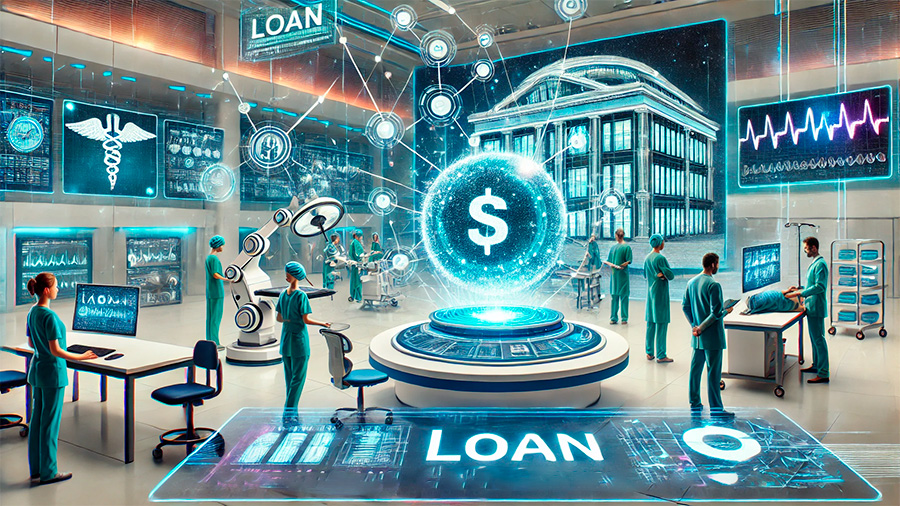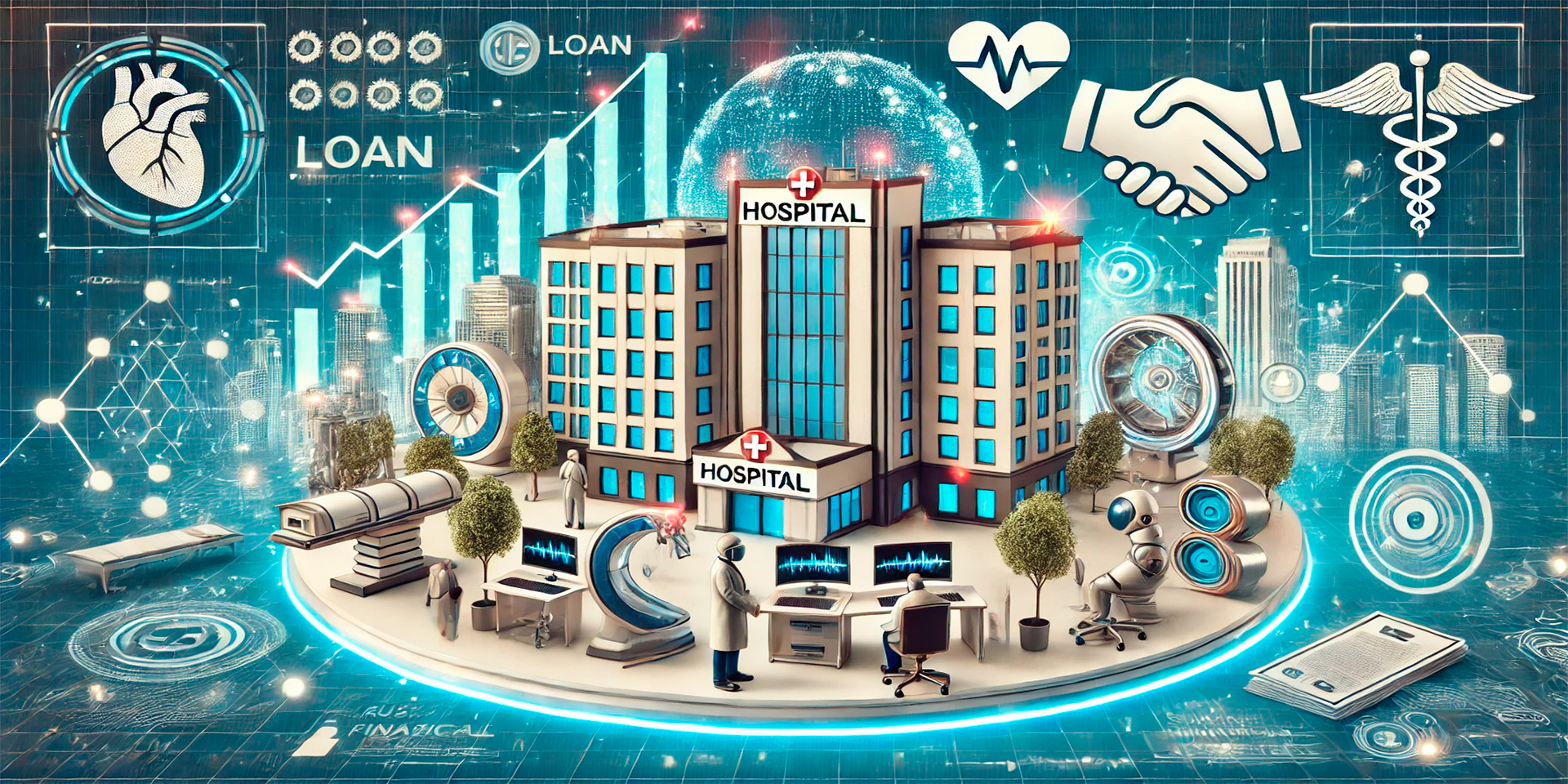In the healthcare sector, access to quality medical facilities and advanced equipment is crucial for providing exceptional patient care. However, acquiring state-of-the-art technology or upgrading existing infrastructure often requires significant financial investment. Loans serve as a practical solution for healthcare providers, enabling them to secure funding for these essential improvements. By leveraging financing options, hospitals, clinics, and private practices can ensure they meet the ever-evolving demands of modern medicine.
The Role of Loans in Financing Medical Equipment
Medical equipment is at the heart of any healthcare operation. From diagnostic tools like MRI machines to surgical instruments, the cost of acquiring such technology can be staggering. Loans provide a means to overcome these financial barriers, ensuring that healthcare providers remain equipped with cutting-edge solutions.
Specialized medical equipment loans are tailored to the unique needs of healthcare providers. These loans often feature flexible terms and competitive interest rates, making them an attractive option for institutions aiming to stay at the forefront of medical advancements. By spreading costs over time, loans allow providers to maintain operational liquidity while meeting technological demands.
Moreover, many lenders understand the specific requirements of the healthcare sector and offer equipment financing tailored to various fields, such as radiology, cardiology, and physical therapy. This targeted approach enables institutions to access specialized tools without disrupting their cash flow.
Benefits of Equipment Loans
- Immediate access to cutting-edge technology.
- Preservation of working capital for daily operations.
- Customizable loan terms to suit repayment capacity.
By investing in advanced equipment, healthcare providers can improve diagnostic accuracy, reduce treatment times, and enhance overall patient satisfaction.

Funding Infrastructure Upgrades Through Loans
As patient expectations grow, healthcare facilities must expand and modernize to accommodate new demands. Loans play a critical role in financing infrastructure improvements, such as building expansions, renovations, and the addition of specialized treatment centers.
Healthcare-specific construction loans are designed to cover both small-scale renovations and large-scale projects. These loans often include extended repayment terms, allowing facilities to focus on patient care without immediate financial strain. By utilizing such funding options, healthcare providers can ensure their facilities are equipped to handle future challenges while meeting current operational needs.
In addition to physical expansion, loans enable facilities to incorporate energy-efficient technologies, enhance accessibility, and improve overall safety standards. These upgrades contribute to a better patient experience and can help facilities comply with evolving healthcare regulations.
Improved Patient Care Through Infrastructure Investments
Infrastructure upgrades financed by loans provide numerous benefits to patients and healthcare providers alike:
- Increased capacity to accommodate more patients.
- Enhanced safety and compliance with regulatory standards.
- Improved operational efficiency and reduced waiting times.
Such investments create a positive impact on both patient outcomes and institutional reputation.
The Financial Flexibility Loans Provide
For healthcare providers, maintaining a balance between financial stability and delivering top-notch care is challenging. Loans offer the flexibility to manage costs while addressing immediate and long-term needs. Through structured repayment plans, providers can allocate resources efficiently and avoid disrupting essential services.
Many lenders offer tailored loan products designed specifically for the healthcare industry. These include short-term loans for urgent needs and long-term financing for substantial investments. Additionally, some financing options, such as operating leases, allow facilities to access equipment without full ownership, reducing upfront costs and providing greater flexibility.
Healthcare institutions can also benefit from revolving credit lines, which ensure they have access to funds when unexpected expenses arise. This financial adaptability is crucial in a sector where emergencies and rapid technological advancements are commonplace.
Balancing Debt and Growth
While loans provide essential support, healthcare providers must carefully assess their financial strategies to avoid overextending themselves. Key considerations include:
- Evaluating the return on investment (ROI) for funded projects.
- Choosing lenders with favorable terms and industry expertise.
- Developing a comprehensive repayment plan to ensure financial sustainability.
By maintaining this balance, institutions can use loans to foster growth without compromising their financial health.

How Loans Enable Innovation in Healthcare
The medical field is constantly evolving, with groundbreaking innovations transforming the way care is delivered. However, integrating these advancements into practice requires substantial funding. Loans empower healthcare providers to invest in research, development, and the adoption of cutting-edge technologies.
For example, telemedicine platforms, robotic-assisted surgery tools, and AI-driven diagnostic systems are revolutionizing healthcare. Loans allow institutions to adopt these technologies early, giving them a competitive edge and enhancing their ability to serve patients effectively.
Furthermore, loans can fund training programs for medical staff, ensuring they are well-versed in using advanced equipment and techniques. This holistic approach to innovation benefits both healthcare professionals and the patients they serve.
Staying Ahead in a Competitive Industry
Innovation financed through loans helps healthcare providers:
- Deliver cutting-edge treatments to patients.
- Improve operational efficiency through advanced technologies.
- Enhance their reputation as leaders in the medical field.
By staying at the forefront of innovation, institutions can better navigate the dynamic landscape of modern medicine.
Conclusion
Loans are indispensable tools for healthcare providers aiming to improve facilities, acquire advanced equipment, and adopt innovative technologies. By offering financial flexibility and tailored solutions, loans enable institutions to meet the demands of modern medicine while maintaining operational efficiency. Strategic borrowing empowers providers to deliver better patient care and achieve long-term growth in a competitive industry.



